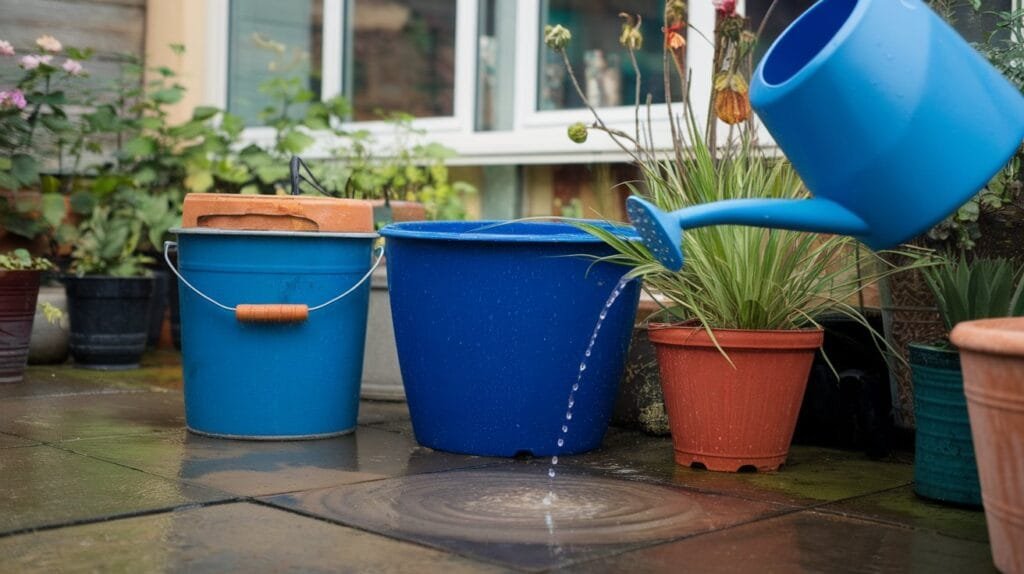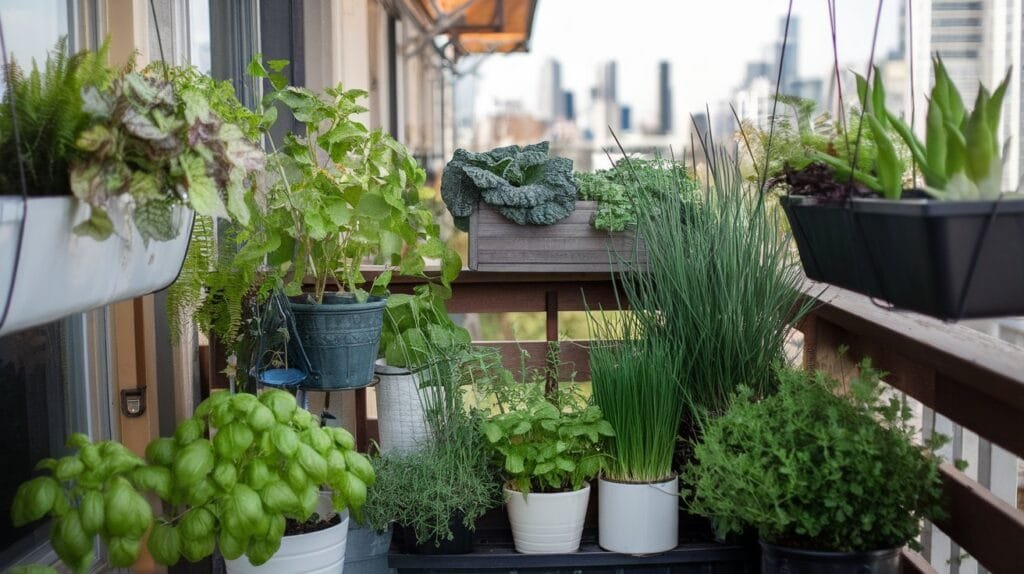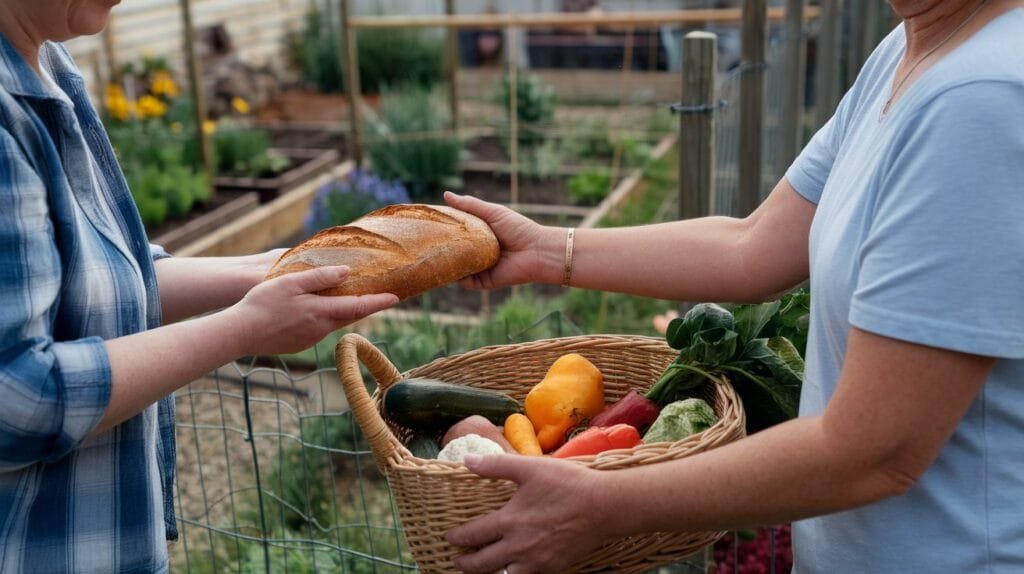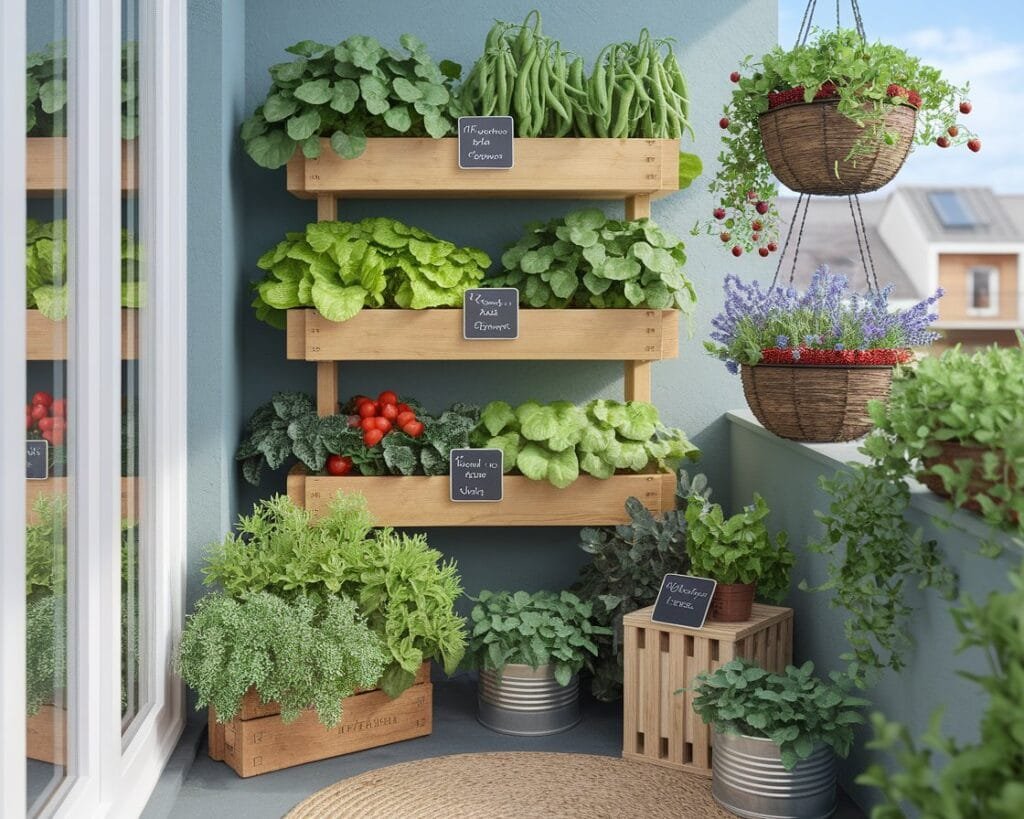
Balcony garden companion planting can transform even the smallest outdoor space into a thriving, productive oasis. Whether you’re working with a cosy city balcony, a compact rooftop terrace, or even a sunny windowsill, the right plant pairings can help you grow more food, keep pests at bay, and create a balanced mini-ecosystem that supports long-term success.
At The Grow Make Learn Box, we’ve spent years experimenting with balcony garden companion planting in small urban spaces—testing what works (and what doesn’t!) when container size and space are at a premium. Along the way, we’ve discovered that companion planting isn’t just for large garden beds or countryside allotments. In fact, balcony garden companion planting is one of the smartest ways to maximise limited areas, naturally deter pests, and improve yields in your container garden.
We’ve also connected with expert gardeners and balcony growers across the UK, who generously shared their wisdom and best-kept secrets on balcony garden companion planting. Whether you’re a beginner wondering where to start, or you’re ready to take your container gardening skills to the next level, this guide brings together those practical insights to help you confidently create a healthy, harmonious balcony garden of your own.
What Is Balcony Garden Companion Planting?
At its core, balcony garden companion planting involves thoughtfully selecting plants that benefit one another when grown together in containers or small plots. In a limited space, every planting decision counts, so choosing companions that support each other’s growth can make a huge difference. When done right, this method not only boosts productivity but also helps you create a small-scale ecosystem that’s more resilient and self-sustaining.
Unlike traditional companion planting in sprawling garden beds, balcony garden companion planting has to take into account the unique challenges of container gardening—such as limited soil volume, faster nutrient depletion, and exposure to harsh balcony conditions like wind and heat. That’s why understanding the principles behind plant partnerships is so important.
Key Principles of Companion Planting On Your Balcony
Here are three essential strategies that will help you make the most of balcony garden companion planting:
- Mutual Benefit: Pair plants that actively enhance each other’s growth. A classic example is basil and tomatoes—basil not only improves the flavour of tomatoes but also helps repel pests like aphids and whiteflies.
- Pest Deterrence: Incorporate aromatic herbs like mint (always in its own container!) and chives, which naturally deter pests. These allies make balcony garden companion planting an eco-friendly way to protect your plants without chemicals.
- Space Efficiency: Combine plants with different root depths and growth habits to maximise every inch of your containers. For instance, lettuces can thrive in the shade beneath taller pepper plants, while deep-rooted carrots share space efficiently with shallow-rooted greens.
Ready to Dive Deeper?
Curious which combinations will thrive in your unique space? Keep reading to explore tailored balcony garden companion planting strategies designed specifically for small balconies, plus practical tips to overcome common container gardening challenges. Whether your space basks in sunshine or battles the breeze, there’s a solution to suit your situation!
Balcony garden companion planting isn’t just for sprawling vegetable plots or countryside allotments. In fact, it’s one of the most effective techniques for balcony gardeners who need to make every inch of space count. Whether you’re working with a compact patio, a sunny windowsill, or a cosy rooftop, choosing the right companion plants can make your small-space garden more productive, sustainable, and beautiful.
At The Grow Make Learn Box, we believe in working with nature rather than against it. Balcony garden companion planting embraces this philosophy by creating small ecosystems where plants support one another—just as we encourage our community to share, learn, and grow together.
Maximise Your Growing Space with Companion Planting
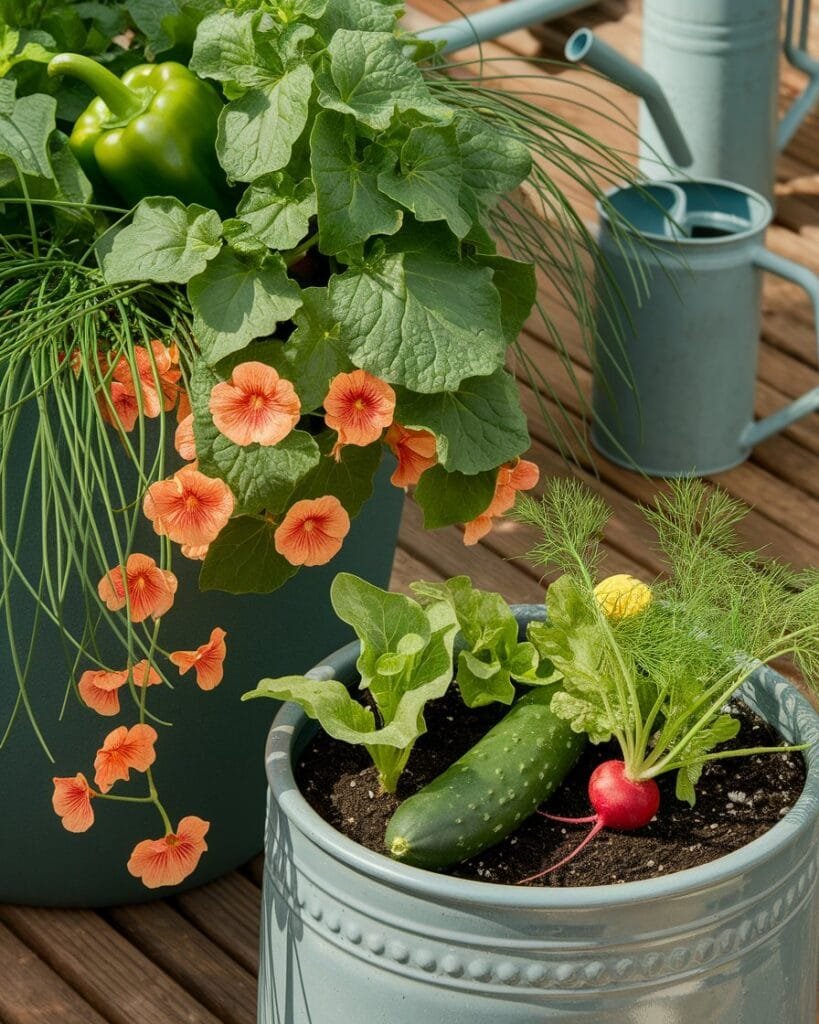
On a balcony, space is often the biggest limitation. Balcony garden companion planting allows you to grow more in less space by making smart choices about plant pairings and layouts. Some of the most effective strategies include:
- Layering plants both vertically and horizontally. For example, train climbing beans up a trellis while growing lettuce or radishes beneath them. This mimics the classic “three sisters” planting method but on a balcony scale.
- Using pots and containers more efficiently. Pair deep-rooted plants like carrots with shallow-rooted companions such as lettuces to prevent competition and make full use of your soil.
- Creating living mulch by planting low-growing herbs like thyme beneath taller vegetables. This helps suppress weeds and reduces water evaporation—key for container gardens that dry out quickly.
Grow Make Learn Tip: Use tiered shelving, hanging baskets, or stackable planters to maximise vertical space and make balcony garden companion planting even more effective.
Improve Soil Health and Nutrient Balance in Containers
Healthy soil is the foundation of a thriving balcony garden, but it can be tricky to maintain in pots where nutrients deplete faster than in traditional garden beds. Balcony garden companion planting can help you manage soil health by:
- Balancing nutrient needs. Combine plants with complementary nutrient uptake—for example, leafy greens like spinach are heavy nitrogen feeders, while herbs such as rosemary require less.
- Fixing nitrogen naturally. Legumes like peas and beans enrich the soil by fixing atmospheric nitrogen, benefiting nearby plants like tomatoes and peppers.
- Reducing soil fatigue. Regularly rotating and pairing different crops in your containers prevents the depletion of specific nutrients.
Soil Health Insight: Add organic compost regularly and rotate crops in your balcony garden companion planting setup each season to keep the soil vibrant and productive.
Natural Pest Control with Balcony Garden Companion Planting
One of the biggest advantages of balcony garden companion planting is its natural pest control benefits. When gardening in close quarters, pest issues can quickly escalate. Fortunately, companion planting offers a chemical-free solution to common problems.
- Repel pests naturally with strong-scented herbs like basil, mint (always in its own container), and chives. These plants can help deter aphids, whiteflies, and mosquitos.
- Attract beneficial insects with companion flowers like marigolds, calendula, and nasturtiums. These plants encourage pollinators such as bees and predatory insects like ladybirds to visit your balcony.
- Use trap crops. Nasturtiums are especially effective at drawing aphids away from valuable plants like tomatoes and beans, protecting your main crops from damage.
Community Wisdom: Many experienced balcony gardeners recommend planting garlic chives near strawberries. This combination not only deters pests but can also improve the flavour of your strawberries.
Boost Yields and Encourage Healthy Plant Growth
Balcony garden companion planting is about more than just pest control. When you choose the right plant partnerships, they can actively support each other’s growth, leading to healthier, more productive plants.
- Promote better pollination by planting flowers like calendula and nasturtiums alongside fruiting crops. More pollinators mean a better fruit set on crops such as courgettes and strawberries.
- Encourage healthier, tastier plants. Companion plants like basil can improve the flavour of tomatoes and support their overall vigour.
- Manage microclimates effectively. Taller plants, like climbing beans or sunflowers, can provide essential shade for heat-sensitive plants such as lettuce or spinach.
For more information about pollinators and how we can help them in our gardening efforts, check out the Pollinator Projects hosted by the UK-charity Bigs Life!
DIY Tip: Use a trellis or climbing frame on your balcony railing to offer shelter and protection for shade-loving herbs and delicate greens in your balcony garden companion planting arrangement.
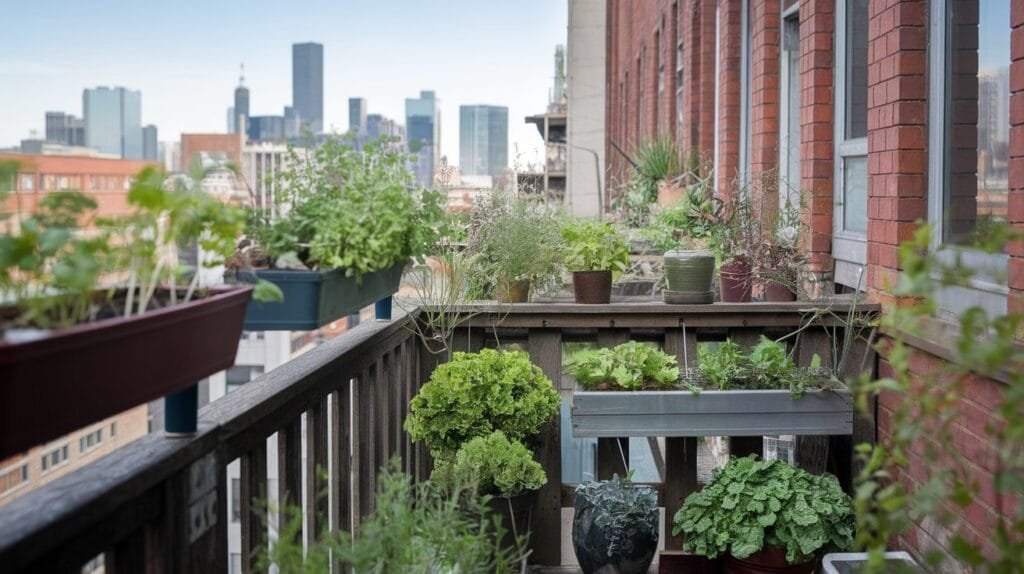
Create a Balanced Ecosystem on Your Balcony
A well-planned balcony garden companion planting setup does more than just make your space look pretty. It helps you foster a balanced micro-ecosystem where plants, insects, and soil life work together in harmony.
- Biodiversity leads to resilience. A diverse companion planting arrangement is better equipped to handle pest infestations and sudden weather changes.
- Mimic natural ecosystems by combining a variety of plants, each playing a role to support the health and productivity of the whole garden.
Grow Make Learn Insight: Think of your balcony garden companion planting as a small but mighty ecosystem. The more varied and harmonious your plant choices, the more productive and resilient your balcony garden will be.
Align Balcony Garden Companion Planting with Sustainable Living
For those embracing a self-sufficient, eco-friendly lifestyle, balcony garden companion planting is a natural extension of these values. It:
- Reduces reliance on shop-bought inputs like chemical fertilisers and pest sprays.
- Saves money by increasing yields in a small space without the need for expensive equipment.
- Connects you with natural growing cycles and reinforces The Grow Make Learn Box values of sustainability and resourcefulness.
Practical growers love using balcony garden companion planting to experiment with heritage varieties of vegetables in her small-space garden. It’s a beautiful blend of traditional gardening knowledge and modern small-space solutions.
When it comes to balcony garden companion planting, choosing the right plant pairings can make a dramatic difference in the health and productivity of your container garden. These combinations are specifically chosen for their effectiveness in small spaces like balconies, patios, and compact rooftops. They’re ideal for container gardening, offering compact growth habits, mutual benefits, and an easy way to maximise limited space.
The Best Companion Planting Combinations for Thriving Balcony Gardens
Whether your balcony garden companion planting is focused on growing food, adding beauty with pollinator-friendly blooms, or creating a healthy ecosystem that requires minimal intervention, these companion combinations will help you build a flourishing and productive garden.
Tomatoes + Basil + Marigold
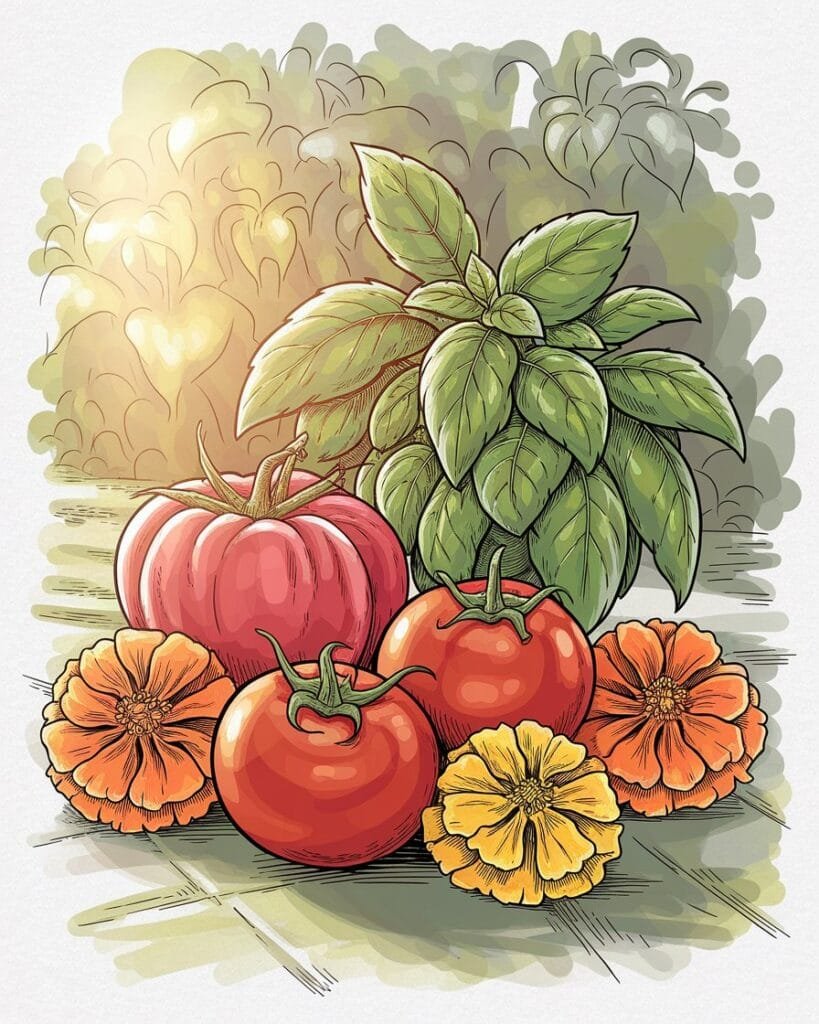
Why they work together:
This classic trio is one of the best examples of balcony garden companion planting in action. Basil naturally repels common tomato pests such as aphids, whiteflies, and tomato hornworms. Its strong scent confuses pests while also improving the flavour of tomatoes when grown nearby.
Marigolds, particularly Tagetes varieties, release compounds into the soil that deter nematodes—microscopic pests that attack tomato roots. Their bright blooms also attract essential pollinators and beneficial insects like ladybirds, creating a healthier environment for your tomato plants.
Balcony Tip:
These plants thrive in full sun and work well in a deep pot (at least 30cm) to accommodate tomato roots. Tuck basil plants at the edges of the container to maximise space, and position marigolds in nearby pots or at the front of the container to enhance pollinator appeal and pest protection.
Peppers + Chives + Nasturtiums
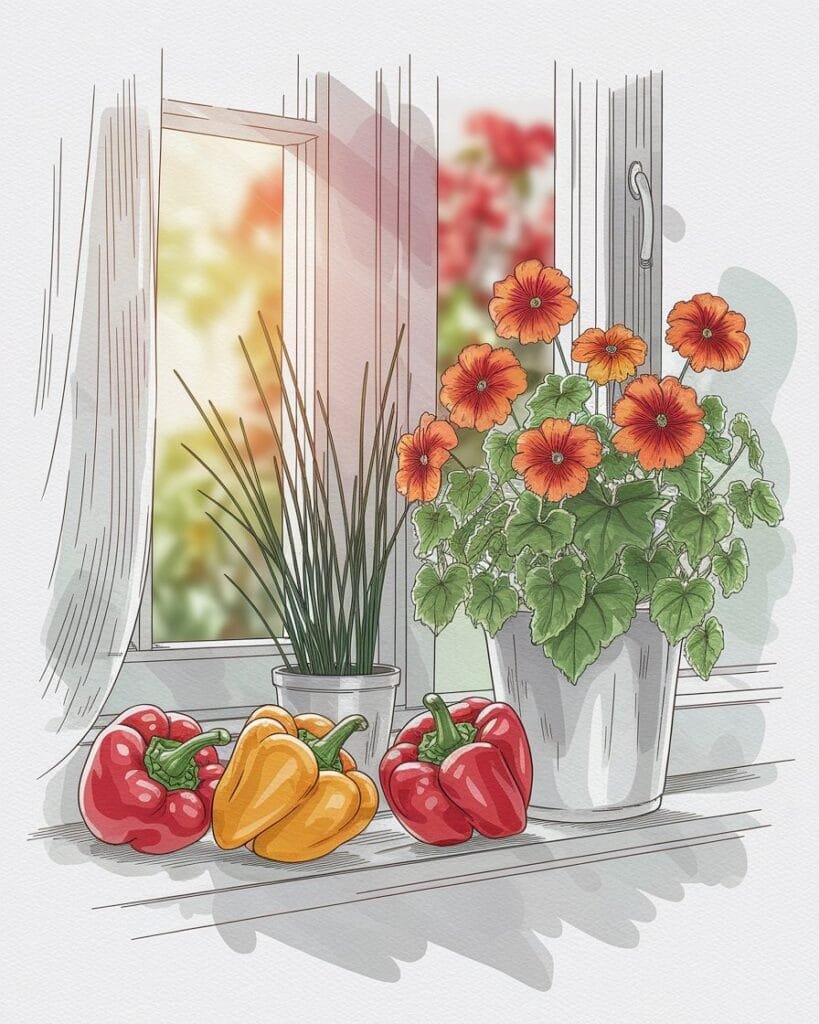
Why they work together:
Peppers are a popular choice for balcony garden companion planting, and pairing them with chives and nasturtiums boosts their health and productivity.
Chives repel aphids and thrips, two pests that commonly plague pepper plants. Their edible flowers also attract pollinators, increasing yields.
Nasturtiums act as a trap crop, drawing aphids and whiteflies away from your peppers while adding colour and attracting helpful insects like bees and hoverflies.
Balcony Tip:
Opt for compact pepper varieties, such as patio peppers, which are well-suited to container gardening. Nasturtiums can trail over the edges of containers or climb small trellises, making the most of your vertical space and adding visual interest to your balcony garden companion planting design.
Cucumbers + Radishes + Dill
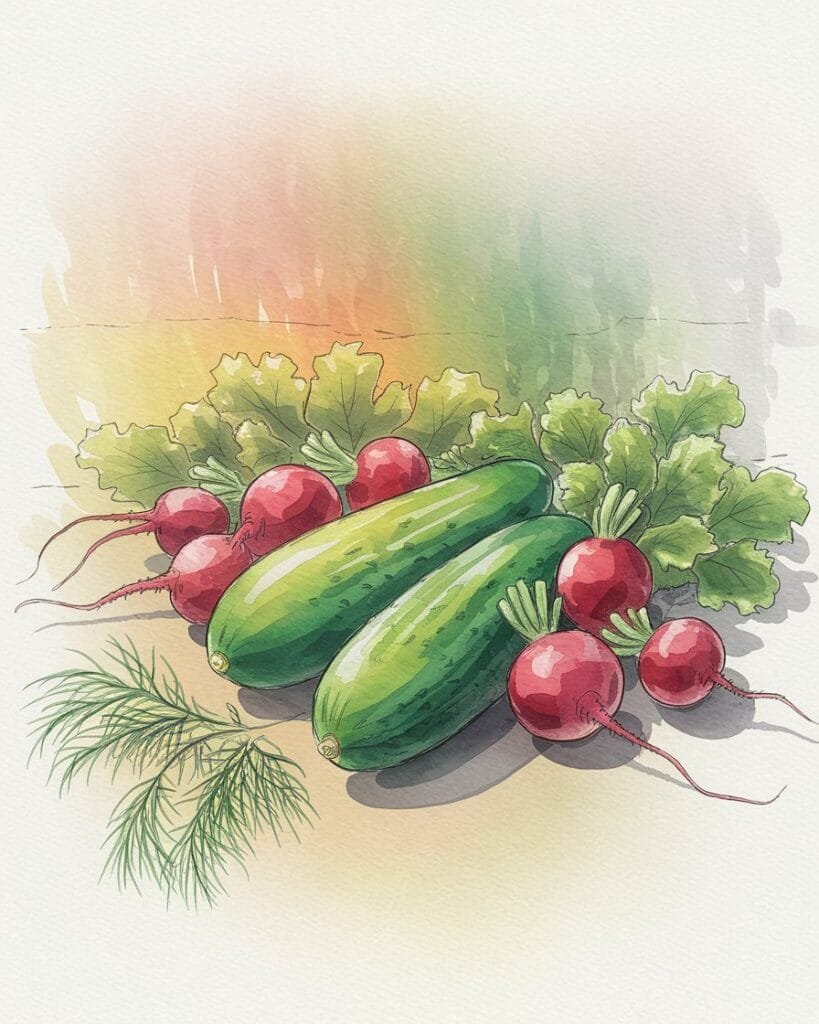
Why they work together:
Cucumbers are heavy feeders and prone to pest issues, but they thrive in balcony garden companion planting when paired with radishes and dill.
Radishes deter cucumber beetles, one of the most common cucumber pests, and grow quickly, making them ideal for succession planting.
Dill attracts pollinators and beneficial predatory insects such as lacewings and parasitic wasps, which help control aphid populations.
Balcony Tip:
Cucumbers need consistent moisture to perform well in containers. Consider using a self-watering pot to maintain steady hydration. Allow dill to flower, as its blooms are key to attracting the beneficial insects that keep pest populations in check.
Carrots + Spring Onions + Rosemary
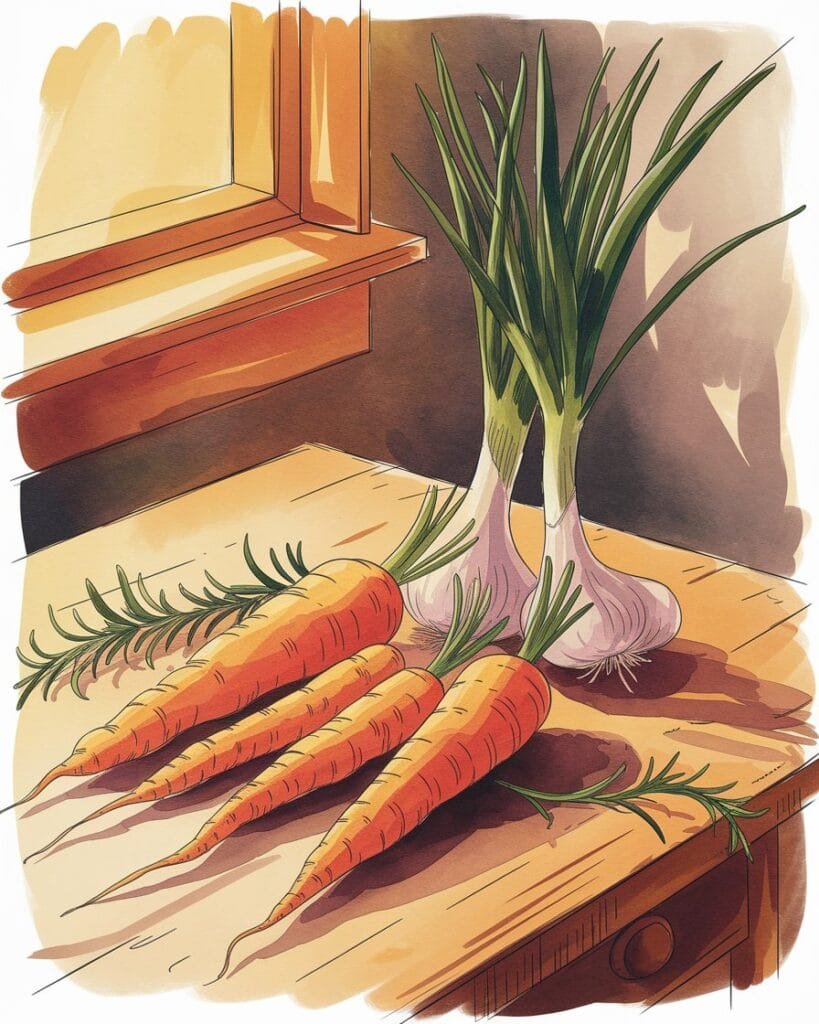
Why they work together:
Carrots benefit greatly from companion plants in balcony garden setups. Spring onions help repel carrot flies by masking the carrots’ scent, while rosemary’s strong aroma further deters pests and adds vertical interest.
Rosemary also draws pollinators when in bloom and provides an attractive, hardy herb that complements the other two crops.
Balcony Tip:
Use a deep window box or container for carrots and onions to allow plenty of room for root development. Grow rosemary in its own pot if possible, as it prefers drier conditions than carrots and onions typically require. This also allows you to move it around your balcony garden companion planting setup as needed.
Lettuce + Strawberries + Borage

Why they work together:
This combination is a pollinator magnet and works wonderfully in a balcony garden companion planting system.
Borage attracts bees and other pollinators, which helps improve strawberry yields. It’s also thought to enhance the flavour of strawberries. Lettuce acts as a living mulch, shading the soil to help retain moisture around strawberry roots and reducing water evaporation in containers.
Balcony Tip:
This companion planting combo is ideal for tiered containers or hanging baskets. Regular harvesting of lettuce leaves prevents overcrowding, improves airflow, and reduces the risk of mildew—a common issue in small, densely planted spaces.
Beans + Nasturtiums + Sage

Why they work together:
Beans are excellent nitrogen fixers, enriching the soil for nearby plants in your balcony garden companion planting. Pairing them with nasturtiums and sage makes an effective team.
Nasturtiums attract pollinators and act as a groundcover, shading the soil to conserve moisture. Sage helps deter bean beetles and other pests, making it a valuable addition to the mix. It’s also drought-tolerant and thrives in sunny balcony spots.
Balcony Tip:
Climbing beans need sturdy supports, such as bamboo teepees or trellises, which can also double as a screen for privacy on your balcony. Grow sage in its own pot to control its water needs separately from beans and nasturtiums, ensuring optimal conditions for each plant.
Courgettes + Calendula + Mint (Always in Its Own Pot)

Why they work together:
Courgettes are heavy feeders and benefit from the pollinator-attracting power of calendula (pot marigold).
Calendula’s sticky stems can also trap small pests, providing an extra layer of protection. Mint repels aphids and flea beetles, common threats to courgettes, but its roots are highly invasive, which is why it should always be grown in a separate container.
Balcony Tip:
Courgettes require large, deep pots (at least 40cm) to accommodate their spreading roots and to ensure adequate nutrition and water retention. Calendula is low-maintenance and can be planted alongside courgettes in the same container.
Keep your mint close by in a separate pot to deter pests across your entire balcony garden companion planting arrangement.
Why These Combinations Work for Balcony Garden Companion Planting
Each of these combinations has been chosen for their ability to work together in container gardens, where space, soil nutrients, and sunlight must be used efficiently. Balcony garden companion planting isn’t just about growing plants side by side—it’s about creating partnerships that support healthier plants, improved yields, and a balanced ecosystem.
Choosing compact, mutually beneficial plant combinations, can transform even the smallest balcony into a productive, thriving garden space.
Quick Reference Table for Small Space Companion Planting
| Main Plant | Companions | Benefit |
| Tomatoes | Basil, Marigold | Pest control, flavour, pollinators |
| Peppers | Chives, Nasturtiums | Pest deterrent, trap crop |
| Cucumbers | Radishes, Dill | Beetle deterrent, pollinator attractor |
| Carrots | Spring Onions, Rosemary | Pest deterrent, aroma masking |
| Lettuce | Strawberries, Borage | Shade/mulch, yield boost |
| Beans | Nasturtiums, Sage | Nitrogen fixing, pest deterrent |
| Courgettes | Calendula, Mint (separate pot) | Pollination, pest deterrent |
Grow Make Learn Tip: Companion planting works best when you observe your plants regularly. Adjust pairings if something isn’t thriving and make notes—gardening is a continuous learning journey!
Quick Guide to Planning Your Balcony Garden
Setting up a thriving balcony garden companion planting system doesn’t need to be complicated. This step-by-step guide will help you plan and grow with success—even in the smallest spaces.
1. Evaluate Your Space
Before planting, take a moment to assess your balcony conditions:
- Sunlight: Track how many hours of direct sunlight your space gets. Most fruiting plants like tomatoes and peppers need at least 6-8 hours a day.
- Wind Exposure: Balconies can be breezy. Use windbreaks like bamboo screens or tall plants to protect delicate crops.
- Weight Limits: Check for any restrictions on your balcony. Choose lightweight containers and potting mixes if needed.
Grow Make Learn Tip: Use reflective surfaces such as mirrors or pale walls to boost light in shaded areas.
2. Choose the Right Containers
The containers you select play a key role in successful balcony garden companion planting:
- Deep Pots (30-40cm): Best for deep-rooted plants like carrots, courgettes, and tomatoes.
- Shallow Trays (15-20cm): Ideal for leafy greens like lettuce, spinach, and radishes.
- Hanging Baskets & Wall Planters: Great for trailing plants like strawberries, nasturtiums, and herbs.
DIY Tip: Reuse wooden crates or upcycled containers for a rustic, eco-friendly look. Ensure all containers have good drainage.
3. Prioritise Soil Health & Watering
Balcony containers dry out quickly, and nutrients are used up faster than in garden beds.
- Use Organic Compost: Opt for peat-free compost enriched with worm castings or homemade compost.
- Rotate Crops: Change plant locations each season to avoid nutrient imbalances and pest build-up.
- Water Consistently: Balcony pots need regular watering, especially in hot weather. Early morning and evening are ideal times.
Grow Make Learn Insight: Mulch your pots with straw or coir to retain moisture and reduce watering frequency.
4. Manage Pests Naturally
Balcony garden companion planting can help with pest control, but an integrated approach works best:
- Companion Plants: Pair pest-repelling plants like basil with tomatoes, or marigolds with beans.
- Natural Sprays: Use homemade solutions like neem oil, garlic spray, or a gentle soap wash to manage pests.
- Physical Barriers: Fine mesh covers, homemade cloches, or netting can protect vulnerable plants.
Pro Tip: Check plants daily—early pest detection makes management much easier.
5. Start with The Grow Make Learn Box
Our Grow Make Learn Box is designed to support balcony garden companion planting. Inside, you’ll find:
- Companion Planting Charts: Easy-to-use guides tailored for small spaces.
- DIY Vertical Planter Instructions: Step-by-step plans to help you maximise your vertical growing space.
- Seasonal Seeds & Organic Soil Boosters: Curated to support a successful, self-sufficient balcony garden.
It’s the perfect starting point for beginners and a helpful way to expand your skills as you grow, make, and learn.
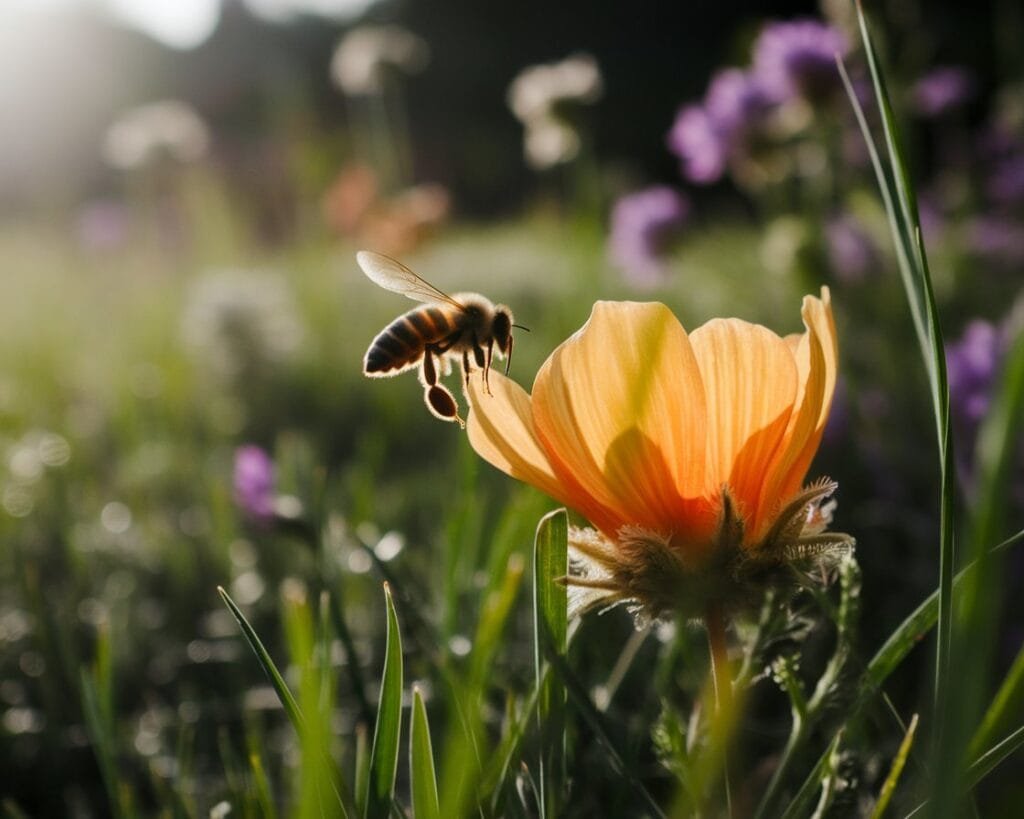
Common Balcony Garden Mistakes to Avoid
Even small-space gardens have their challenges. Here’s how to avoid the most common balcony garden companion planting mistakes:
Overcrowding Your Containers
Squeezing too many plants into one pot limits airflow, increases the risk of disease, and stunts growth.
Solution: Give plants enough room to grow. Follow spacing recommendations and thin seedlings if needed. Vertical planting can help maximise your space without overcrowding.
Mismatched Water Needs
Plants with different moisture preferences can struggle when planted together.
Solution: Group plants with similar water and soil needs. For example, Mediterranean herbs like rosemary, thyme, and sage prefer dry conditions, while lettuce and courgettes need consistent moisture.
Ignoring Growth Rates and Plant Size
Fast growers can shade or overwhelm slower ones.
Solution: Plan ahead. Place taller plants like beans or tomatoes where they won’t block sunlight from shorter companions. Use tiered planters or trellises to create space and improve light access.
Planting Invasive Species Together
Some plants, like mint, can take over containers and crowd out others.
Solution: Grow aggressive plants like mint and lemon balm in separate pots to keep their roots contained.
DIY Tip: Keep a garden journal to track what works and what doesn’t. Record your companion planting combinations, watering habits, and pest control methods. Labelling your pots also makes it easier to manage your garden as it grows.
Conclusion:
Companion planting balcony garden strategies make even the smallest spaces productive and sustainable. By choosing smart plant partnerships and thoughtful layouts, you can cultivate a healthy, beautiful garden—whether you’re a beginner or an experienced grower!
Are you ready to get started on your growing journey? Subscribe to The Grow Make Learn Box today and Grow, Make, and Learn—one small space at a time!

